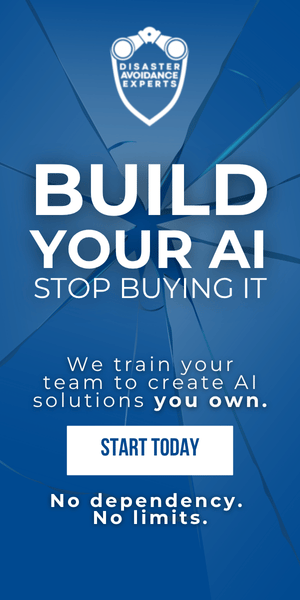- A Salesforce survey revealed that 66% of over 6,000 consumers expect companies to understand their needs and expectations.
- Conversational marketing emphasizes authenticity, curiosity, and empathy, enabling businesses to connect with their audience and better understand their needs.
- Conversational marketing can guide key business decisions by anticipating needs and offering solutions, ensuring that every touchpoint in the customer journey engenders trust.
We know that understanding customer needs is critical for success, but hold on to your seats, folks. I have a groundbreaking stat for you: Salesforce surveyed over 6,000 consumers and found that 66% of them expected companies to understand their needs and expectations.
The Impact of Predictive Marketing
Why is this important? Well, according to a research report conducted by Forbes, 57% of companies said they were able to drive higher conversion rates and a greater return on investment (ROI) for marketing activities after investing in predictive marketing.
That means, if you are a restaurant, you should know that your audience gets hungry around noon, and your product should be readily available to anticipate and satiate their craving.
Predicting hunger is one thing. Predicting human and business needs pertaining to the future of work is another. If you’re a resource-rich company (deep pockets and a bunch of time), investing in research to anticipate needs is reasonable. What if you don’t have deep pockets and endless time? Well, that’s where the power of conversational marketing comes in.
What I love about conversational marketing is that we can conduct research while guiding the decision-making process, providing a solution, and generating revenue at the same time.
Expert Insights on Building Blocks for Conversational Marketing
I find Caleb Parker, founder of Bold, to be incredibly strong at conversational marketing and making human connections. So, I asked him to for some insights on the building blocks for conversational marketing.
“To me, conversational marketing is about connecting with your tribe. It’s about authenticity, and curiosity or empathy,” he explained. “No one wants to be sold to. But we all want someone who understands us.”
Then, he described what I see as a multi-stage process creating empathy via conversational marketing.
“To engage with empathy, we must have truly walked in their shoes. Which goes back to authenticity,” he said. “But what if we haven’t walked in their shoes? This is where curiosity comes in.”
“Instead of advertising or sharing our expertise we can inspire our audience to reflect by asking the right questions. Asking questions enables conversation, which creates engagement. That helps us understand people. And understanding people is the path to growing our tribe,” he concluded.
I think we all agree that asking the right questions provides a powerful foundation for conversational marketing, establishing human connections, and fulfilling needs. For example, Rather than speaking “at” the target audience via a static website or lead form, we can employ tools to speak with the target audience, using adaptive questions, and offering solutions prior to connecting live. And, in increasing instances, the funnel can even guide the prospect to self-fulfill and purchase without assistance.
Ok, so we know that asking the right questions is important. But where, when, and how do we ask those questions?
An Integrated Approach to Conversational Marketing
Mary Hanula is a very talented Senior Director of Marketing who works at Eulerity, a marketing automation software platform that that uses AI to optimize digital marketing efficiencies and ROI. While many are freaking out about AI taking over jobs and dehumanizing the connection between companies and buyers, Mary’s approach hinges on human interaction and engagement. She shared with me how she uses a fully integrated approach to conversational marketing.
For Mary, conversational marketing stands as the cornerstone of her strategic efforts.
“I firmly believe that fostering trust and transparent communication is non-negotiable,” she said. “Every touchpoint, from check-in calls, podcast interviews, co-marketed webinars, in-person dinners and continued outreach, is an opportunity to nurture relationships, drive conversations and fulfill our goal of anticipating needs.”
She continues to share that, “building authentic relationships with our audience and partner brands hinges on our commitment to openness, dedication, and trust. These touchpoints allow us to resonate on a deeper level, and incorporating these principles requires a deliberate approach.”
For me, the clincher in Mary’s approach is her underscoring that automation and AI go hand in hand with conversational marketing.
“You have to be willing to do the work to personalize and deliver customer connections,” she explained. “It’s not just the Eulerity platform that makes your brand successful, but the people behind it. True success lies in cultivating meaningful relationships, understanding your customers’ needs, and aligning them with your brand’s aspirations. By prioritizing genuine interactions over scripted exchanges, we pave the way for symbiotic growth.”
Navigating the Future of Work With Conversational Marketing
So, how do we apply these ideas to anticipate and fulfill needs with regards to the future of work? Right now, we are in at an exciting and frightening time for humans making workspace decisions.
As we know, from a financial standpoint “facility” is the second largest fixed line item behind people. Typically, these are long-term decisions that, if made correctly, will enhance performance and, if made incorrectly, will put a stranglehold on the business. From a human standpoint, historically, less than 1% of knowledge workers were able to make a workspace decision. Today, unlike anything business has ever seen before, just about every single employee now has a voice and a say in terms of where, when, and how they work.
Given this set of facts, there is no question that fear of making the wrong choice is at the heart of the dialogue. So, as I create workflows for each step in the need fulfillment process (notice I did not use the word “sales”), I ensure that every touch point in this dynamic conversation serves to guide and engender trust by anticipating needs and offering solutions.
Therefore, at a very high level, when crafting your conversational workflow, consider dissecting each touchpoint from the moment the prospect sees your brand, begins the conversation, connects with your product, receives a proposal, signs on the dotted line, and consumes the prospect. Then, at each touchpoint, document the decision-tree for the prospect, the leading questions you will use to guide the prospect, and the potential solution for each branch and the narrative to overcome objections.
Finally, bring the dialogue to life at each touchpoint from your digital advertising to your chatBot, website, inbound call script, tour, proposal letter and template, to the framework for the follow up sales calls. As a category our conversational approach will be so powerful that prospects will self-fulfill purchasing many products pertaining to the future of work online!
Perhaps most important, it is critical for every person who touches the prospect — from marketing to sales, operations, and finance— to engage as an empathic guide throughout the conversation.
This process provides the foundation for the empathetic approach to conversational marketing that Caleb referenced. Once you have established this foundation you can then adapt messaging to the integrated communications approach that Mary referenced.
The exciting aspect of conversational marketing is that the approach enables the business to use data collected by continuous engagement to drive ongoing incremental improvements that will increase conversion and ROI, while delighting prospects and customers throughout the process.


 Dr. Gleb Tsipursky – The Office Whisperer
Dr. Gleb Tsipursky – The Office Whisperer Nirit Cohen – WorkFutures
Nirit Cohen – WorkFutures Angela Howard – Culture Expert
Angela Howard – Culture Expert Drew Jones – Design & Innovation
Drew Jones – Design & Innovation Jonathan Price – CRE & Flex Expert
Jonathan Price – CRE & Flex Expert













